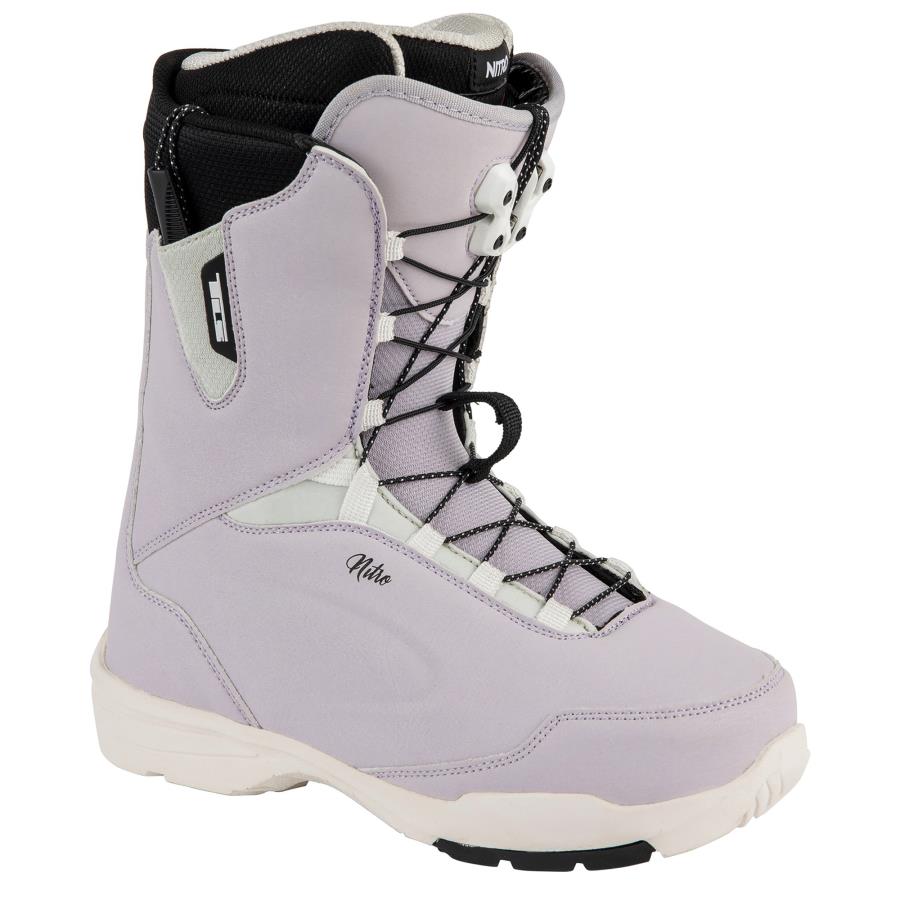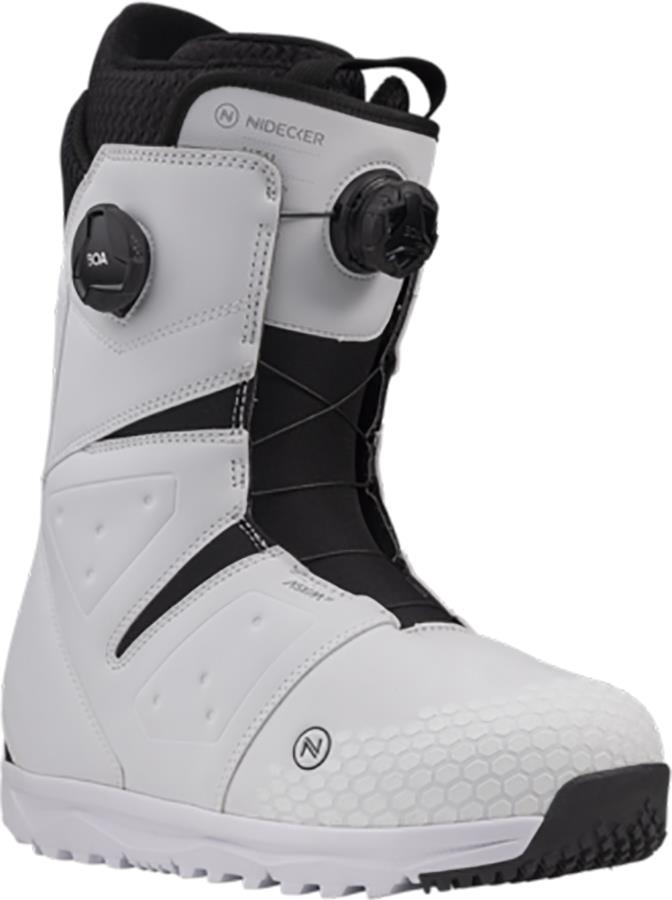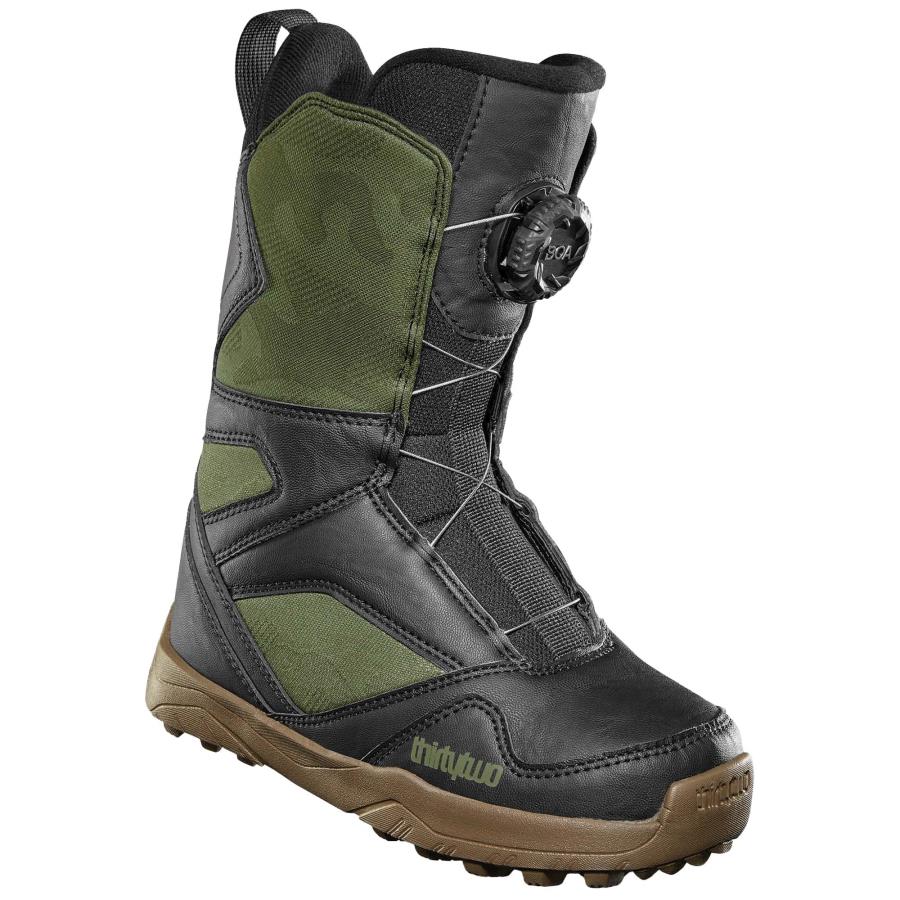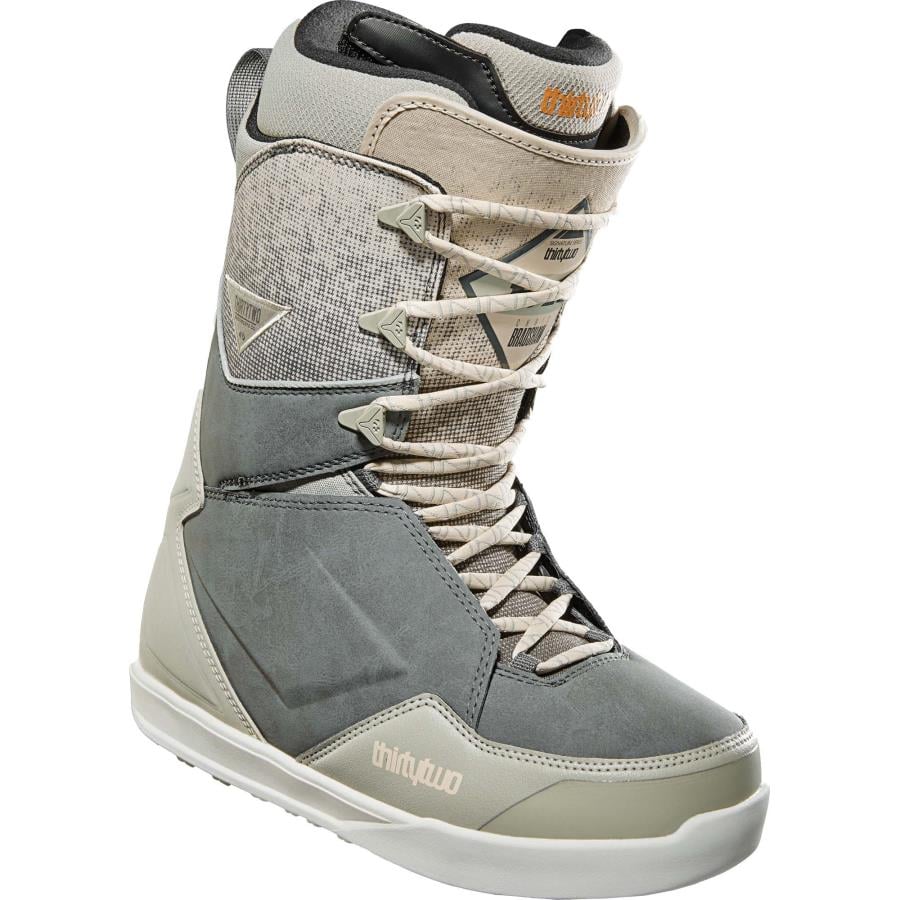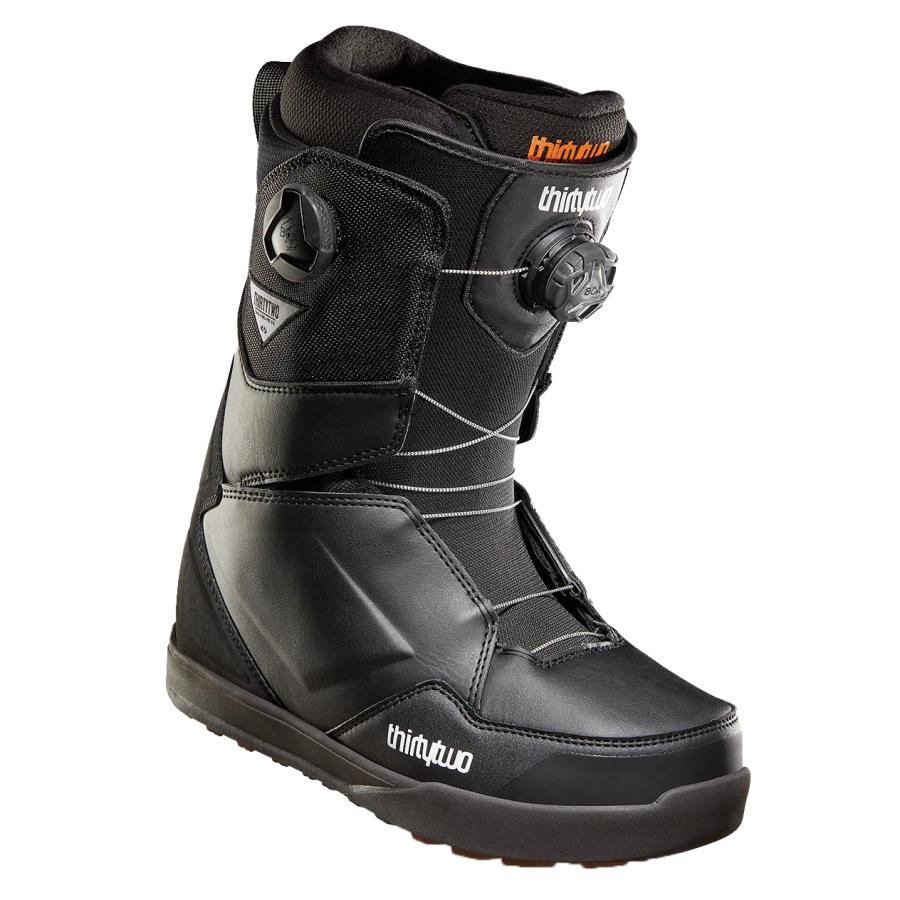The Absolute Guide to Buying Snowboard Boots
What Snowboard Boots Do I Need?
_(1).png)
Snowboard Boots are the most important part of your set up but don't let this put you off buying.
If you follow our helpful guide below you will find everything you need to know explained in simple and easy to follow way. If you are only going to buy one piece of snowboard kit, make sure you buy your own snowboard boots. You will progress much faster and be in a much better position to learn wearing your own boots rather than a sloppy old pair of rental boots which have been worn by hundreds of other people!
Snowboard boots can easily make or break the perfect day on the mountains and there is nothing worse than having cold, painful or uncomfortable feet when trying to enjoy the mountains. When choosing snowboard boots you should consider the right ability level, flex pattern, quality and riding style.
Our comprehensive list of features below will tell you everything you need to know when buying your next pair of snowboard boots. Just remember - always choose the boot that fits, not the boot that looks best! For more information on how to choose the right sized boots, check out our Snowboard Boots Size Guide.
Anatomy Of A Snowboard Boot
Most snowboard boots actually come as two main parts - the shell and the liner. The shell is the rigid outer section of the boot which gives you support, flex and control.
The liner is the softer internal section which moulds to your foot to keep you comfortable and secure in the boots. The shell and the liner work together along with other features such as the backstay, sole, footbed and laving system to give different snowboard boots different qualities.
Some reduced volume boots come with a combined shell and liner. These are particular popular with people with larger feet who want to be able to ride standard width snowboards. Check out the key parts of a snowboard boot below.
In the past, snowboard boot shells have been made of rigid plastic. Although these boots are still available, they are used primarily for eurocarving and racing. 99% of modern snowboard boots are made with a semi-rigid external shell and a softer lining. This semi-rigid shell forms the shape and size of the boot and gives the boot it's correct flex pattern.
By altering the materials used in a snowboard boot shell, manufacturers are able to make boots which suit every sort of snowboarder whether you spend all your time lapping the park, cruising the piste, or charging the backcountry. If you have larger feet then some manufacturers make boots which have a reduced volume shell. This combines the shell and liner into one piece and allows someone on the border of a snowboards' width to ride a narrower board. These types of boots are generally popular with riders who have feet size UK10 and above or female riders with size UK7 and above.
The shell of a snowboard boot also comprises of the backstay, sole and liner.
The liner is one of the most important parts of your snowboard boots. The liner is the inner part that goes inside the boots shell and ensures a comfortable and secure fit in your boots from the moment you put them on in the morning to the moment that you take them off in the evening. Liners vary from very basic foam stock liners to highly engineered heat mouldable liners which hug your foot.
You can see this progression in the image below which has a basic stock liner on the left, mid range liner in the middle and a top level performance liner on the right.
Notice the increased amount of support, more streamlined shape and improved lacing and foot hold system.

Mid range boot liners like the one in the middle of the image above are found on a large amount of snowboard boots. These liners feature more performance oriented designs such as heel holds and strategic foam placement, without compromising on comfort. This gives a great balance which is favoured by a lot of riders. A lot of mid range liners will be mouldable, usually by the heat of your foot as you ride. This mouldable foam reacts to body temperature to expand and grip your foot for better performance.
High end snowboard boot liners like the one on the right of the image above offer the highest level of performance for more advanced riders who want precision and control from their equipment. These liners often feature additional heel holds, cinch lacing, velcro straps, strategic foam placements and more exotic materials. Most high end liners will be fully heat moldable. This means that the liner can be heated using a special boot molding machine. You then put your feet into the boots, tighten the lacing and stand in a riding position for a short period of time. The boots then mould to your feet to give a premium, custom fit.
Caring for your liners properly will help prolong the life of your boots. The biggest boot killer is wet liners. A wet liner which doesn't dry out correctly can damage the foam and cause it to deteriorate quicker than it otherwise would. We highly recommend that you remove the liners from your boot every night and never put your liners directly onto a heat source such as a radiator as this can damage the foam. When drying your liners you should place them away from a radiator or use a specific low temperature Snowboard Boot Drier.
The backstay is the vertical part at the back of a snowboard boot. The backstay provides support and gives the boot its specific flex pattern.
High end freeride or more advanced boots will tend to have a much stiffer backstay whereas a freestyle, jib specific or beginner boot will have a much softer backstay and therefore a softer flex. Stiffer backstays make a boot more responsive and better for more advanced riders who want precision and performance. Softer backstays make a boot more 'tweakable' allowing you to do grabs and presses. A softer backstay also makes a boot more forgiving and easier to control making it better for beginners.

The tongue of a boot also affects the flex pattern. By making the tongue stiffer you make the boot more responsive edge to edge. By making the tongue softer you make it easier to use. Some high end boots have adjustable tongue flex beams which can be added or removed from the boot. This allows them to perform equally well on piste as in the backcountry.
The flex of your boot can also be affected by how tight you do your laces. Some people like to run their boots with very loose laces at the top. This gives more freedom of movement and tweakability allowing you to ride a more responsive boot in the park.

Just as much technology goes into the bit underneath your foot as the bit around it. If your snowboard boots have a poor quality sole then you will almost certainly have a poor quality ride. Snowboard boot soles have two main functions - grip and comfort. You need to be able to grip well so that you don't end up sprawled on the floor (we've all done it at least once!) and so that you can scoot along when you only have one foot strapped in. Snowboard boot soles usually feature tough tread patterns which offer grip on concrete, tarmac, snow and ice. A selection of different manufacturers tread patterns can be seen in the image below.
The second feature of the sole is comfort. Manufacturers use different types of materials including EVA foam, gel pads and rubber strategically placed in the sole to offer maximum comfort. High end boots often have more cushioning or special materials which absorb impacts from hard landings. You can see this in the sole on the left hand side of the image.

The footbed (also called the insole) is the one part of a snowboard boot that you cannot see yet has one of the biggest impacts on comfort and performance.
You will never meet a pro athlete who doesn't sneak an upgraded footbed into their boots at the start of the season! The quality of a stock footbed will often be reflected in the price of the boot. Cheaper boots will tend to have very basic footbeds which are often nothing more than a thin piece of foam and offer very minimal support.
More expensive snowboard boots will usually have a more ergonomic footbed which offers more support and includes different materials including EVA foam and even cork. We always recommend upgrading from a stock footbed to get a better, more comfortable, performance fit.

If you suffer from sore, painful feet or get foot fatigue and cramp then you will also benefit from an upgraded footbed/insole for your boots. The two main types of upgraded insoles are Trim-To-Fit and customised. Customised insoles can be very expensive as they are specifically molded to your foot. Trim-To-Fit insoles are a lot cheaper but still offer all the additional support and comfort you want and need. This is why we exclusively offer Trim-To-Fit insoles which can easily be fitted and adjusted at home. We offer upgraded insoles on every pair of snowboard boots we sell. Just check out the 'Optional Extras' dropdown menu on each product to see our top recommendations.

Traditional laces are the purists choice! They are just like the laces on your favourite trainers and are still considered to be the most reliable and easily replaced lacing method. Should you have a catastrophic lace failure while on holiday you need not worry with traditional laces.
Simply pull out the old lace and replace it with a new one! Traditional laces have a couple of main advantages over other lacing methods. As mentioned they are very easy to replace and most good snowboard shops will be able to supply you with replacement laces when you need them.
Traditional laced boots also tend to be a bit cheaper than other lacing methods as there are less parts involved - which also means less things to go wrong!

Purists like traditional laced boots as they allow you to fully customise the fit of your boots. If you want to have a tighter lower section and looser top section or the other way round then you can do, simply pull the laces tighter where you want when lacing them up. The downside to laces is that they can loosen during the course of the day and they can be more difficult do up if you like your boots very tight. You can also buy different coloured laces to liven up your boots.
Quick Laces (also called Speed Laces) are favoured by riders who want to squeeze every second out of their days riding. If you like to get up in the morning, throw on your boots and get out on the mountain then quick laces are for you. They are also great for riders who find it tricky to put on or do up traditional laced boots. Quick laced boots are incredibly easy and straight forward to put on and take off. Most manufacturers have their own speed lace or quick lace systems and many have their own names for them as well but they are all very similar.
They all use a thin yet tough lace, often made from reinforced nylon. This lace will be threaded through eyelets on the boot and locked into something with gripping teeth. The most common methods of locking these laces into place are with plastic cleats or locking levers. This prevents the laces from slipping back through the eyelets. Higher quality quick lace systems often use dual zone lacing. This allows you to tighten the upper and lower part of the boot independently, giving a more precise and comfortable fit.

Quick lace and speed lace systems are very easy and convenient making them an increasingly popular method of lacing. The downside to quick lace or speed lace systems is that the laces can be more difficult to replace should they break.
BOA is a fantastic boot closure system that's incredibly easy to use. BOA uses a high tensile cable and ratchet wheel instead of traditional laces. This allows you to put your boots on and take them off in a matter seconds as well as dialing the fit to perfection. When you turn the BOA dial it tightens the laces with a ratchet. This means they don't slip and don't undo.
To undo the lace and get out of the boot you just pop out the dial by gently pulling it away from the boot. This releases the ratchet and allows you to open the boot as wide as it can go without having to pull the laces back down the boots.
Push the dial back against the boot and the ratchet re-engages allowing you to do them up again.

There are a couple of different BOA lacing methods including standard BOA, BOA Conda and BOA Focus.
Standard BOA uses a single ratchet wheel placed on the tongue of the boot. BOA Conda uses an internal harness to wrap around the liner of the boot. This gives an incredibly secure fit and reduces heel lift. BOA Focus uses a dual wheel system. This has one ratchet on the tongue and one on the side of the boot. These adjust the lower and upper section of the boot independently allowing for a more precisely tuned fit. You can also get hybrid BOA systems which use traditional laces and BOA together however this system is less common.
The image here shows a variety of BOA boots including standard BOA (middle and left) and BOA Focus (right).
The main downside to a BOA snowboard boot is that it is much more difficult to change the laces if they do happen to break (although this is incredibly rare!). If you do need your BOA laces replaced you should take them to the shop you purchased them in or to an authorised BOA dealer who will be able to replace them for you. You can also contact BOA directly who should be able to send you replacement parts. All BOA systems come with a lifetime guarantee on the laces and ratchets.
Every snowboard boot will have its own unique flex pattern. This is determined by the materials used in its construction and relates to the type of riding you are looking to do. Flex patterns range from very soft to very stiff with most manufacturers measuring their boots on a scale of 1-5 or 1-10. Remember that there is no industry standard for measuring a boots flex rating and every manufacturer uses their own system for measurement. Therefore we recommend taking boot flex as a guide only. All of our boot listings mention the flex rating which we have taken from the manufacturers information but have also included information we have found when testing the products. To make it as easy as possible for you we have listed boots as Soft, Medium or Stiff.
Softer flexing boots allow for more movement in your ankle. This makes them good for beginners as the boot tends to provide more room for error - great when learning the basics! Softer boots are also preferred by a lot of park and freestyle snowboarders as they have a very playful feeling and allow you to tweak grabs, press and add plenty of style to your riding. The main downside to softer boots is the lack of precision. Because of this they are unsuitable for more advanced riders and freeride snowboarders who want a performance ride.
Stiffer boots give less ankle movement and therefore increased response. Every move you make is directed straight to your snowboards edges with less energy waste giving you a really accurate and responsive ride. Because of this stiffer boots are preferred by advanced riders and those taking on big mountain, carving and powder lines. When you ride harder and faster you need to be able to make quick adjustments. Stiffer boots allow you to do this.
Although the above statements are true there is also a degree of personal preference involved. Some freestyle riders prefer stiffer boots and bindings with a much softer board.
A good quality pair of Snowboard Socks can be a real investment and can transform your riding just as much as a new pair of boots can. A good quality sock can make the difference between a good comfortable fitting boot and cold feet!
We always recommend the following:
A good quality pair of socks
Never wear more than one pair of socks when riding
Wear the same socks when you try on boots as you will wear when riding
For more help and advice on choosing good quality socks check out our Snowboard Sock Buying Guide.

A question we get asked a lot is whether a pair of boots is compatible with a specific pair of bindings. 99% of the time a pair of boots will fit with any pair of bindings providing the boots are within the size range of the bindings.
The exception for this is Burton Step On boots due to the construction of the boot. Step On boots feature 'toe cleats' and 'heel cleats' which are designed to work seamlessly and exclusively with Step On bindings.
Some boots have reduced footprints and others have slightly larger footprints. If you are unsure of compatibility please drop us an email and we will do our best to advise you.
Snowboard boots are available in men's, women's and youth versions. Most men's boots will be suitable for either men or women. They usually have a slightly higher calf and wider foot section than women's specific boots, although this is generally due to the fact that they come in larger sizes.
Women's-Specific Snowboard Boots will tend to have a lower calf section and narrower foot to match the shape of women's feet although as with men's boots this is generally due to the fact that they come in smaller sizes. Women's boots also tend to have more feminine graphics and colours than men's boots.
Kids or Youth Snowboard Boots are specifically designed for the anatomy of children's feet and due to the size of the boots will often be velcro or speed lace to be easier to put on.
Explore Our Latest Snowboard Boots
Check out our full range of Snowboard Boots today!
Need further advice? We're here to help!
Check out our Snowboard Buying Guides for technical tips and tricks.
Visit our Help Centre to speak to our experts.
